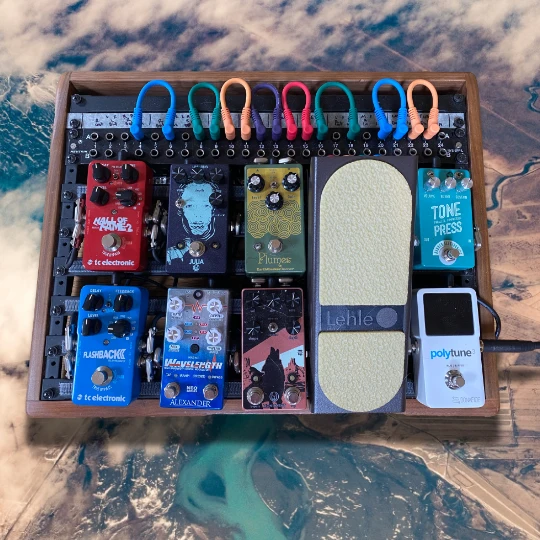Background🔗
Guitar effect pedals usually have at least one input and one output jack. The signal flows along the effects chain, through these in's and out's, with each individual pedal altering the sound along the way. This is an intuitive system that has existed for ages, however one of the challenges with it is manually having to unplug one setup, in order to alter the signal flow thus achieve a different sound.
The thesis behind this project was to see if adding a layer of abstraction around the signal flow of the pedals can improve upon the limitation just described. By having all the inputs and output of the pedals instead plug into the back half of a patchbay*, one can change the signal flow routing using the front half of the patchbay, without having to physically unplug the pedals themselves.
*Note: a "patchbay" is sort of like a telephone switchboard.
To the best of my knowledge this is the first pedalboard of its kind.
Articles🔗
I am currently in the process of doing a detailed write up for this project.
